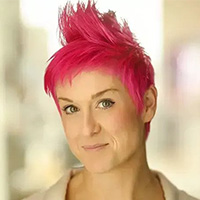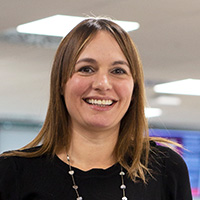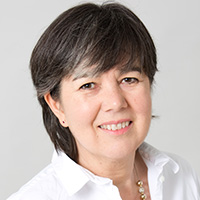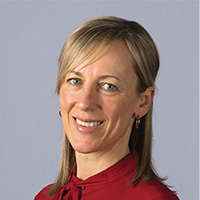Striking the right boardroom diversity balance
The benefits of a diverse leadership team are many, varied and well documented. Not so clear is the extent to which channel companies are progressing with their D&I strategies at leadership level. Here, channel leaders share insights into their boardroom diversity status, strategies and successes.
 THEA TANNER
THEA TANNER
BT WHOLESALE
“At BT Wholesale, 62 per cent of the leadership team are women, from an ethnic minority background or both. We have started an LGBTQ+ leaders initiative to ensure those in the LGBTQ+ community are represented at senior levels in the division. BT Group aims to have 17 per cent of our workforce made up of disabled colleagues too. A truly diverse organisation is diverse from the top down, as leaders set an example that trickles down to all levels. Boardroom diversity is an integral part of company culture, employee wellbeing and wider business strategy. Greater diversity improves workplace culture, giving employees the confidence to contribute and ensuring a range of voices are considered. Organisations which reflect our diverse society will reap the rewards in the future and the channel should pave the way for a more inclusive workplace which provides equal opportunity.
 VICKI RISHBETH
VICKI RISHBETH
FOCUS GROUP
“I am proud to be a part of an ELT which is 40 per cent female. While this is only one diversity metric, it is unusual for our industry. Our longer-term strategy for boardroom diversity is the same from the top down, it is about analysing patterns and behaviours for any potential blockers that stop our people from taking opportunities, seeing how we can negate these and set a positive example by making sure we have diverse high performing teams throughout the group. The greatest teams have a mix of talents, backgrounds, experience and approaches. When making high-consequence decisions in the boardroom it is important the team can bring many perspectives to ensure the right strategy is analysed and implemented quickly. For me, diversity means developing an environment and culture which enables anyone who strives to be part of that team, an opportunity for a seat at the table.”
 SOHIN RAITHATHA
SOHIN RAITHATHA
REDSQUID
“To maintain our focus on diversity and equality while fostering personal development we invite non-exec team members to present at our monthly board meetings. This approach has brought new and diverse perspectives to problem solving and has provided insights from different areas of our business. We prioritise diversity within our team and ensure that it is reflected from the floor to the boardroom. Without diversity boardrooms can become static and innovation can be stifled. That's why we make a conscious effort to build a team that encompasses diversity in age, race, nationality, gender and skillsets, which is also reflected in our boardroom. We intend to continue nurturing leadership qualities within our team and we look forward to extending this opportunity to new team members in the next 12 months.”
 KELSEY HOPKINSON
KELSEY HOPKINSON
COLT
“We’ve worked hard to achieve 50/50 gender parity, racial and ethnic diversity in our executive leadership team and DEI is a business imperative. If just one team member has traits in common with the customer, the entire team is 152 per cent more likely to understand the customer so our commitment reaches beyond just the boardroom. Diverse businesses deliver a better customer experience. We’ve just achieved our highest ever NPS scores. There are lots of factors behind this but a diverse, happy, engaged workforce delivers a better customer experience. More than 50 per cent of the women that join the tech industry quit by 35, and 56 per cent by mid-career. It’s crucial to remove barriers that hinder the progression of minority groups to senior levels, otherwise boards will look the same and make the same decisions as they did five years ago.”
 JO LAWRENCE
JO LAWRENCE
EXERTIS
“In the last five years we’ve increased our gender and ethnicity diversity, still with more to do. We’ve increased our balance of long-serving and newer tenured colleagues to blend corporate knowledge and other sector insight. We’ve more than doubled the number of women in our Senior Leadership Team in recent years. We must continue this and be more proactive beyond gender. We work with our Employee Resource Groups to attract and promote talent from under-represented groups and continue to develop our leaders through inclusive leadership programmes and reverse mentoring schemes. We have an annual D&I pulse survey to understand the progress we are making and the lived experiences of all colleagues. Boardroom diversity means having a range of experiences, thinking styles, preferences and protected characteristics where everyone can be their true self and be heard. This brings better outcomes as we’re more creative and consider a wider range of options.”
 JULIE BISHOP
JULIE BISHOP
IT NATURALLY
“Our leadership team is made up of women and men, full and part time workers and varying ages and ethnicities. We hire based on aptitude and personality which allows us to recruit a wide range of people. When we combine women and mens' perspectives we create a more balanced and inclusive environment. Diversity allows for a broader range of ideas, solutions and approaches that lead to better service for our customers. We are agnostic to diversity, we don’t set targets and at the request of our team, we don’t ask questions. This has led to an amazing team that is diverse because everyone is the best person for the job. Diversity is not about ticking boxes, it's about fostering innovation, creativity and success.”
 MANDY FAZELYNIA
MANDY FAZELYNIA
ZEST4
“As well as our board of directors, for day-to-day management we have the leadership team which has an almost 50/50 representation. Every consideration is taken to make sure that we maintain and enhance our diversification at all levels. We feel incredibly strongly about diversity and equality and want to make sure there’s fair representation across every level of our business. We do this by nurturing our staff to progress throughout their time with us. This makes sure that the skill we cultivate stays within our business, creating a committed team. Diversification at board level is a direct result of the talent we nurtured rising naturally to the top of our organisation, and because of this we create a strong, focused and dedicated leadership.”
 CHERIE HOWLETT
CHERIE HOWLETT
JOLA
“Deloitte says diversity takes various forms in a boardroom and can be broadly categorised into skills, expertise and experience. Having the optimal mix is paramount. We believe diverse boardrooms are often more successful because of the way they utilise the wide range of skills and experience at their disposal and the corporate culture they have cultivated. Diversity is part of our values and positively affects how we do business. It starts with an ingrained respect for others and a desire to work together to achieve a common goal. This influences how we innovate, our marketing style and the way we help partners. Hiring people from diverse backgrounds can help to foster creativity and offer a range of perspectives and ideas. Employees are more likely to feel empowered to innovate in an environment where inclusivity is a priority.”
 LINDA PATTERSON
LINDA PATTERSON
TD SYNNEX
“We have four women on our main board of ten (this was just one four years ago) and a goal to have 40 per cent women in senior level positions across the business. It’s harder to set targets for other diversities, but we certainly do have people of different ethnicities, sexual orientations and with disabilities or neurodiversities in our organisation. A good DEI policy can only be effective with leadership commitment at the highest level. Greater diversity brings broader views and increased creativity which is good for the whole organisation. Our DEI policy ensures everyone can perform to their best and advance their skills and careers. All this makes us more diverse, gives us access to a wider talent pool and creates a more open and fulfilling place in which to work.”
 VICKY BORI
VICKY BORI
NEOS NETWORKS
“Boardroom diversity means having people of different ethnicities, genders, religions and age groups contributing to the leadership and direction of the business. Greater representation empowers organisations to make more informed, collective decisions which utilise a variety of skill sets and experiences, to positively impact company culture, performance, competitiveness and sustainability. Research shows that diverse companies are 35 per cent more likely to perform better. Across telecoms and STEM, gender diversity continues to be a challenge. To address this, we’re investing in grassroots engagements such as presentations in schools and offering work experience to encourage more women and girls to pursue a career in these sectors. We’re looking at where our business stands today and quantifying the positive impact diversity can have. It’s critical that the sector explores methods to plug the gaps, creating more diversity and inclusion and an easy gateway into the industry.”
